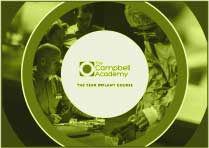
Read Online
In the 1990s, it was braces.
After the change in the NHS dental contract in 1992, various people started to jump towards the private sector, but the orthodontists found a way to see 6 people at once. They made the most money it was possible to make.
A little bit later in the 90s, it became veneers from America. There was a guy called Larry, who pushed that hard, just cut the teeth down and get them straighter and whiter now (we still do that now, at least some do).
Around that time, too, implants arrived, and dentistry was changing quickly. The NHS ortho guys were killing it over here, seeing 6 a day, the veneer guys were over here killing it, cutting down teeth, the implant guys started killing it over here, screwing bolts in.
Then we moved on.
CT arrived in the 2000s, making implants better, sexier, and more technological. We started to get CAD/CAM technologies entering the world, and all of a sudden, it was possible to look at things like clear aligners, implants, and move on again. We started to do orthodontics quicker and quicker, short-term, apparently, no problems with that, everybody wanted a quick fix.
We were still doing veneers to straighten people's teeth quickly, and braces could straighten them. Then the intraoral scanner (iOS) arrived; it took a while for that to gain traction. We had our first in about 2010 when iTero came out for the first time and was sold by Straumann. It was always going to work that; it was just going to take time to work.
After 30 years, milling crowns became a little bit more acceptable, a little bit more accessible at the chair side. That was the next big thing, too. We were milling surgical guides to chair-side in 2014, and then guided surgery really landed and then digital smile design kicked on again after DSD moved into the real world, and everybody started to have a version of DSD.
And so now we find ourselves in this world where much of the orthodontics is going to clear aligners (on the private side). The nails are still a thing for some guys that don't care about patients, and overtreatment with veneers is still a thing for people who don't care about patients.
Whitening is more than well established; implants are way past the norm for possible treatments, and everything now can be linked up in a digital universe (Straumann and have that moving forward faster than anybody else).
And so, what comes next?
Or is there something that comes next?
There's not much new about supermarkets. Supermarkets are a thing. The biggest thing that happened to supermarkets in the last few years was Aldi and Lidl (cheaper).
There's not a lot new about televisions now; they're about as flat as they can get, about as smart as they can get.
Cars, too, they're about as electric or non-electric or as fast as they can get, we can make them look a bit sexier or a bit more desirable, maybe. But really, that's just tinkering around the edges.
The next big thing for cars would be a flying car.
The next big thing for supermarkets would be, well, not much really, I guess.
The next big thing for dentistry… if there is not the next big thing for dentistry, the only thing that will set you apart from someone else is where you are and the service that you provide.
Otherwise, everybody else will pretty much be in the same place.
Are you ready for the next revolution?
Maybe.
But I might not be coming.
Blog Post Number - 4845





Leave a comment